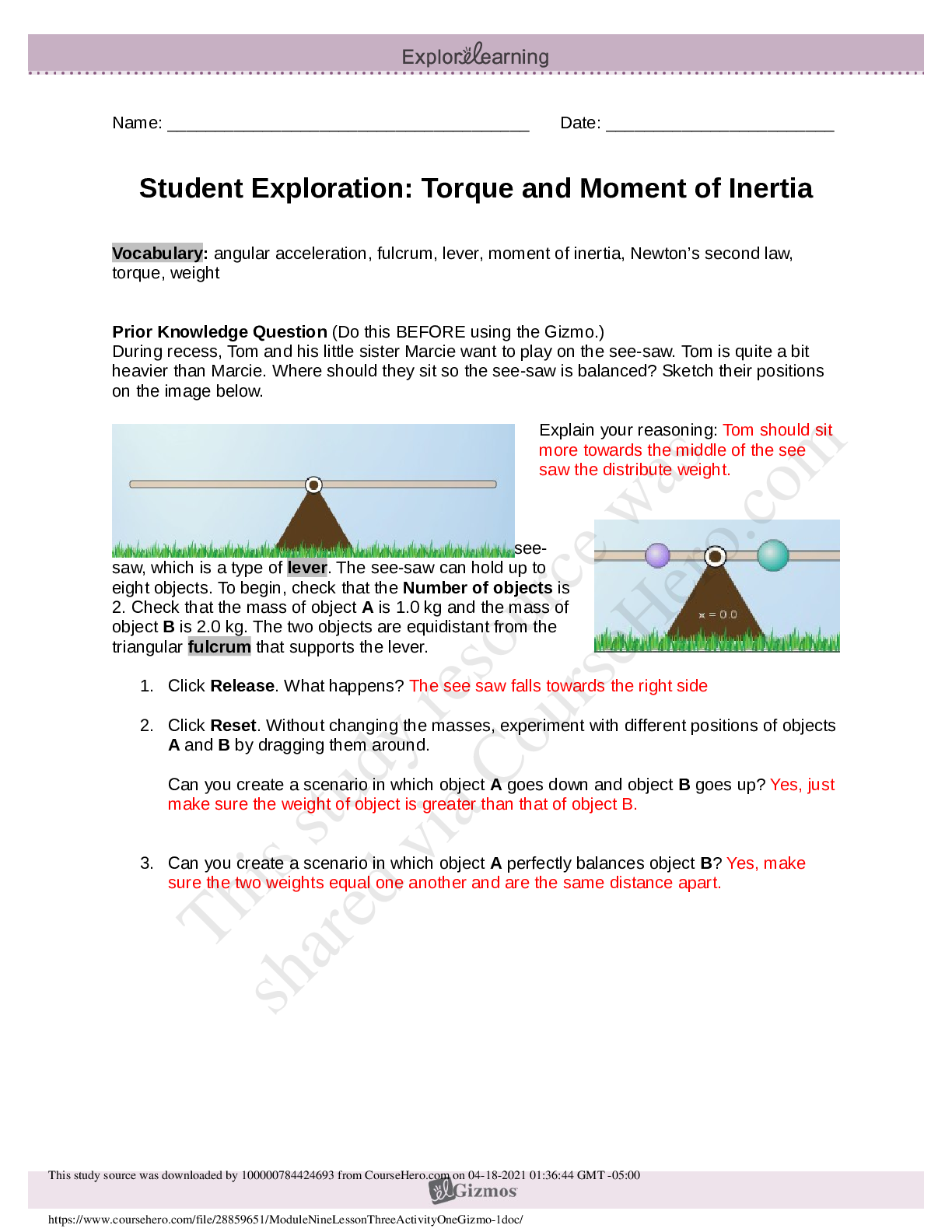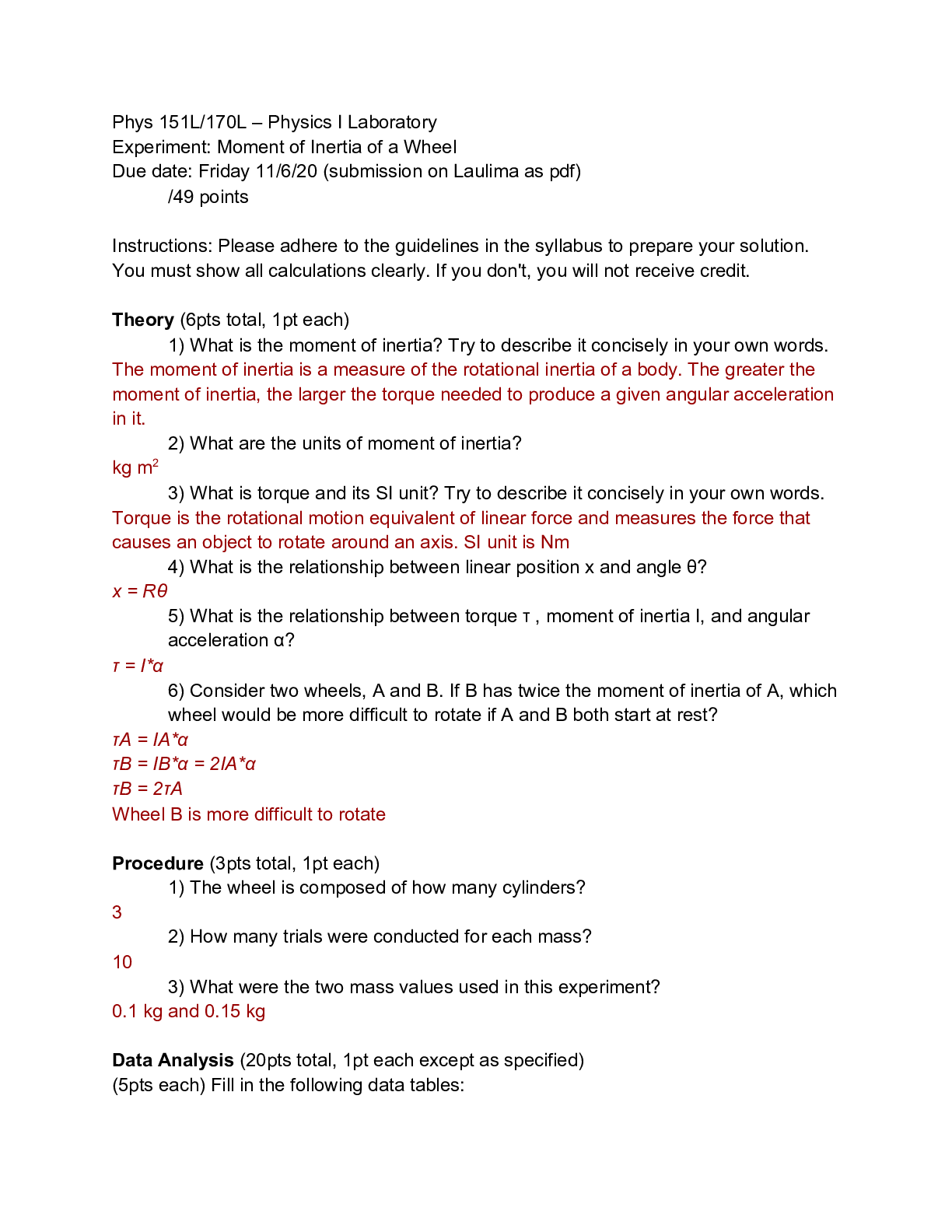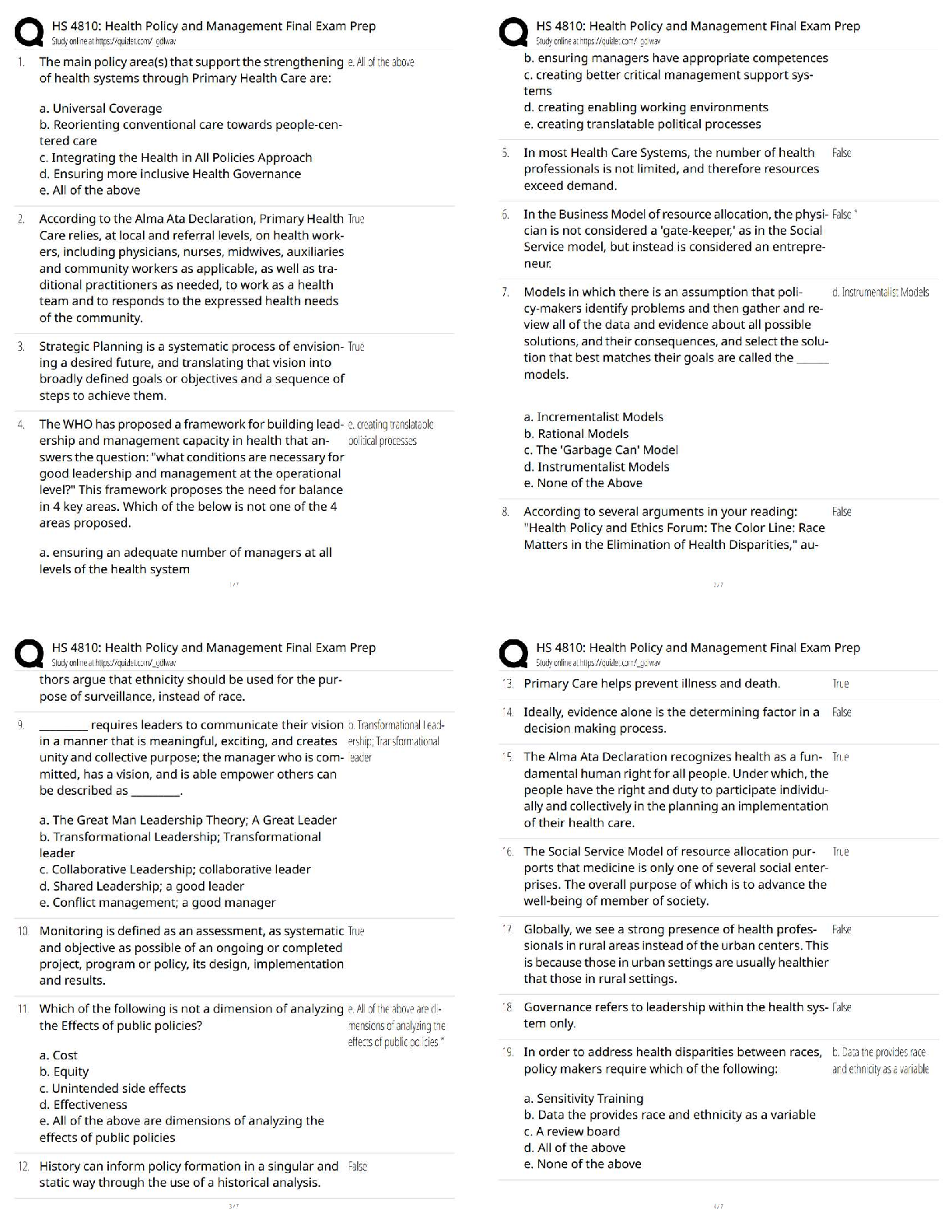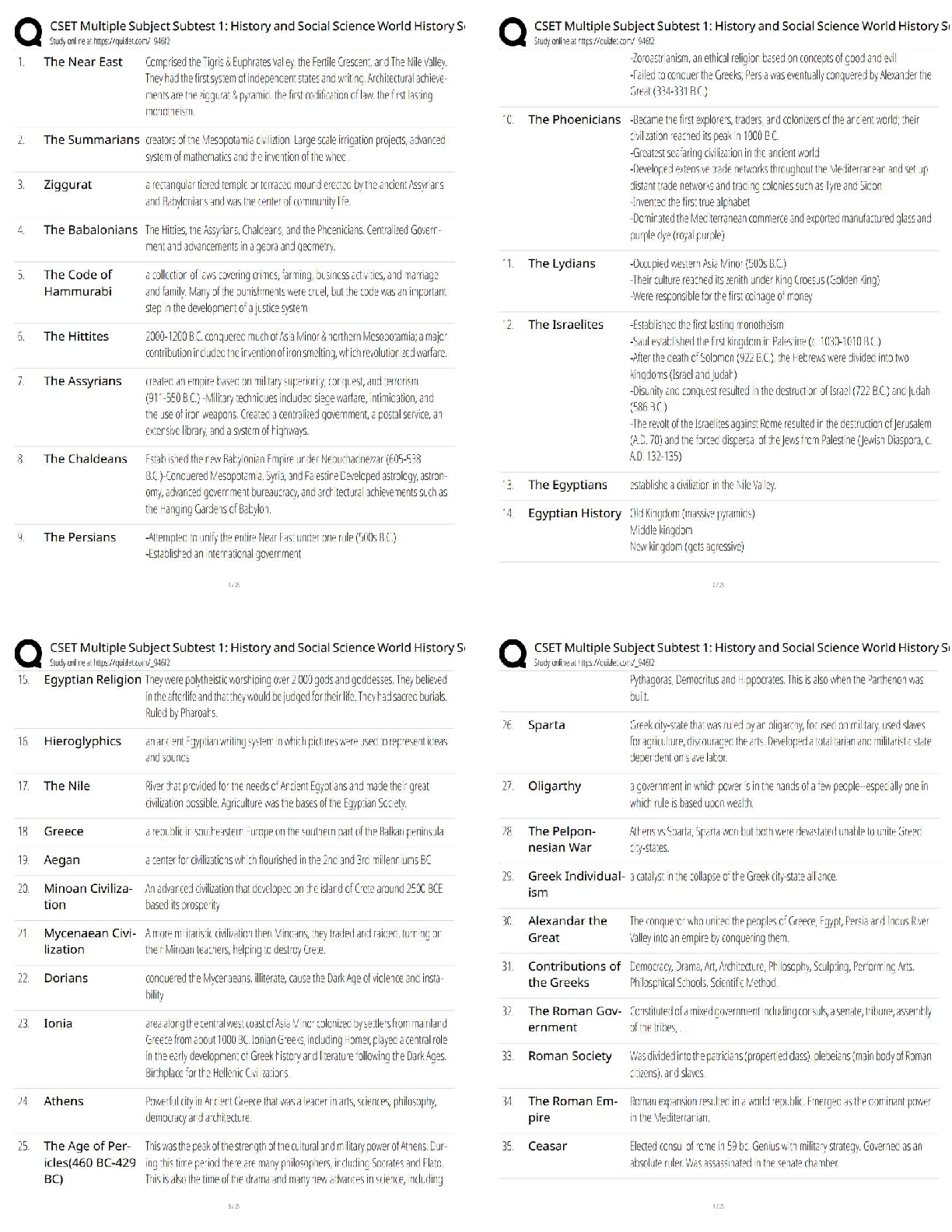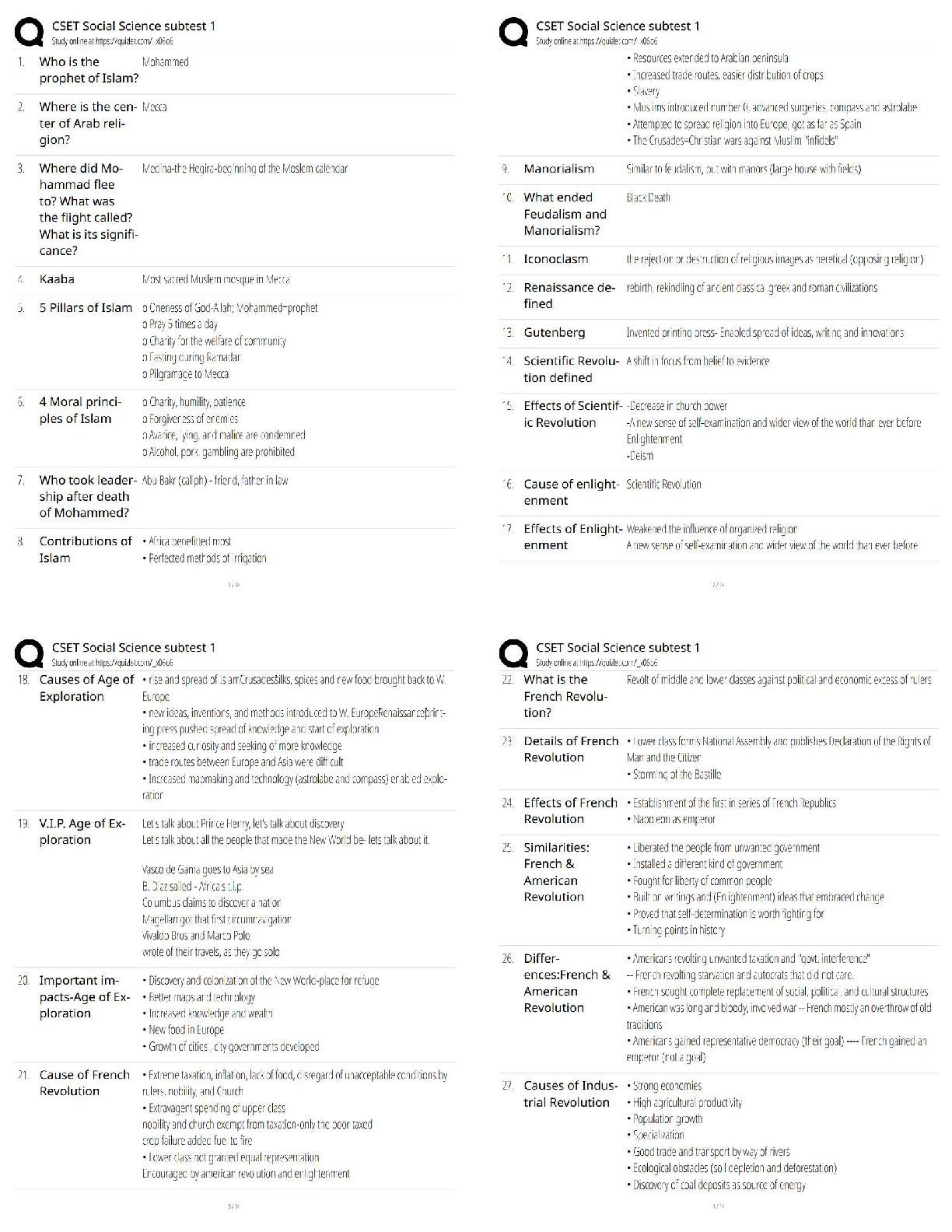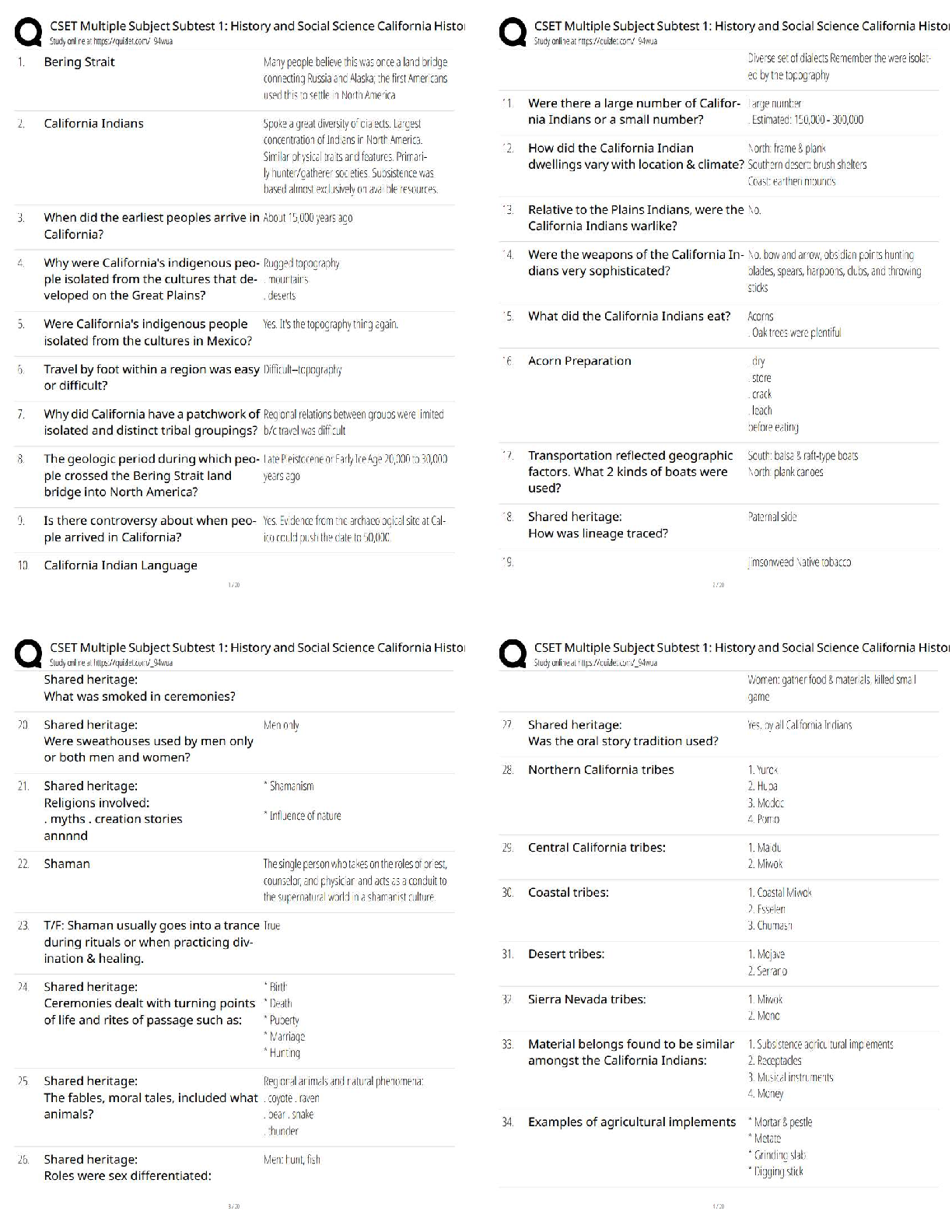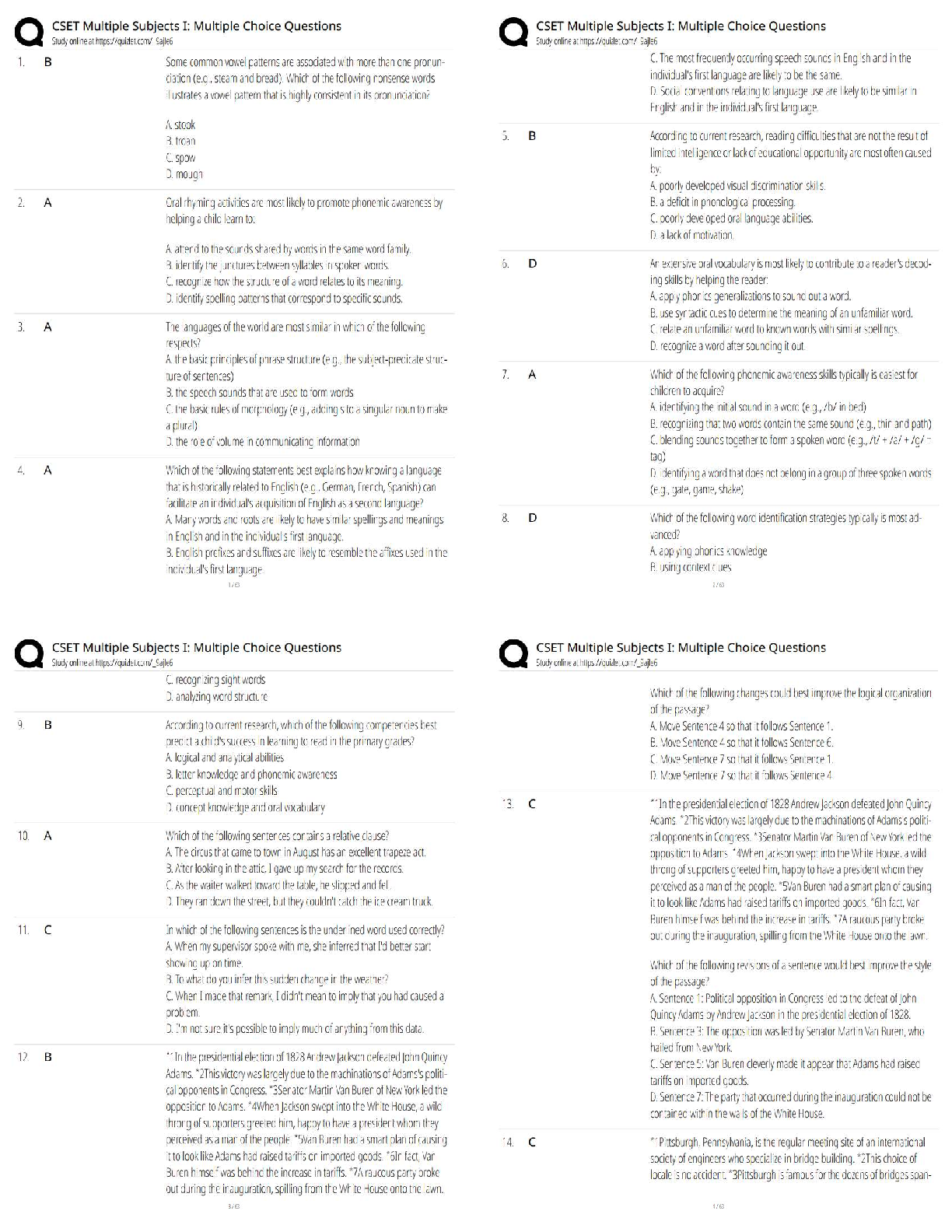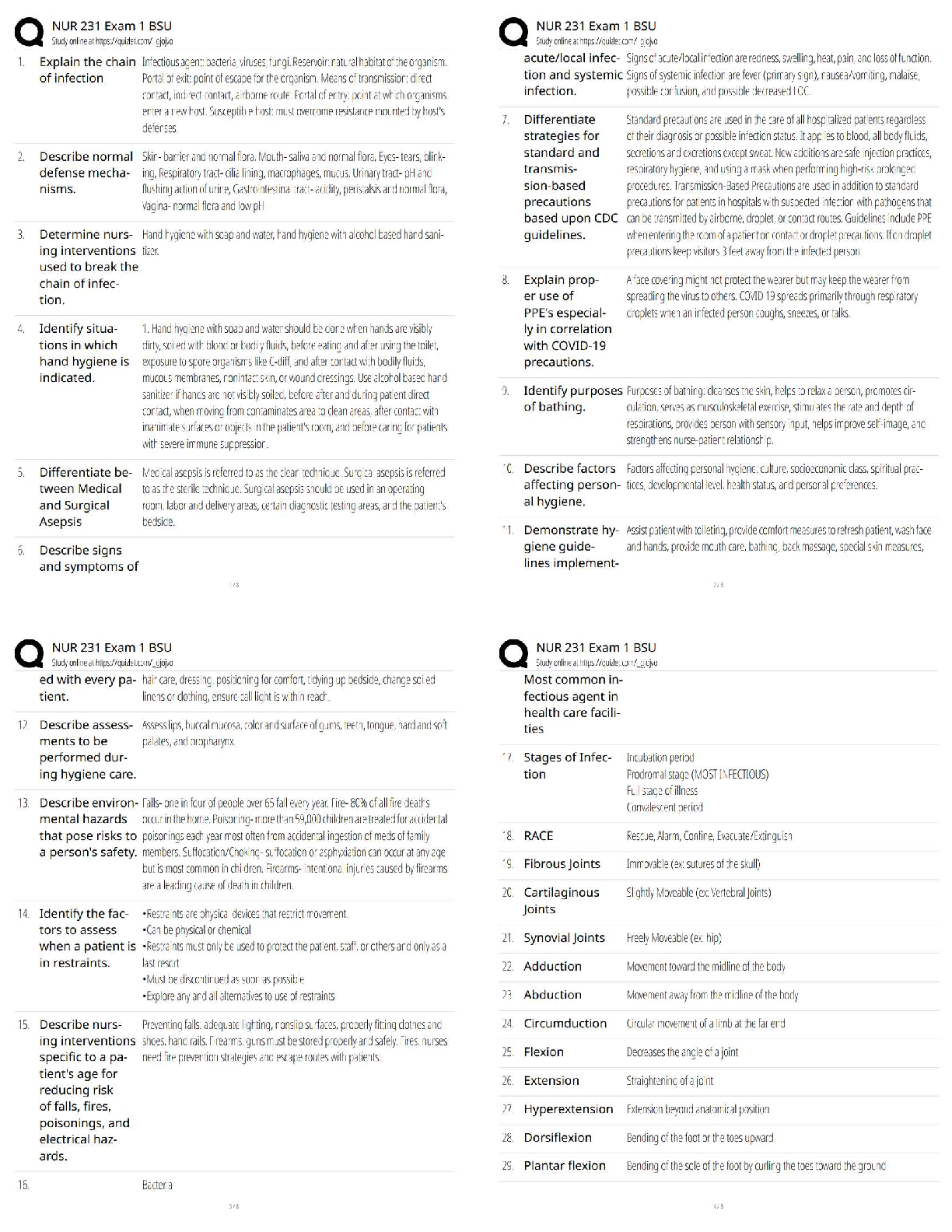Physics > QUESTIONS & ANSWERS > Dallas Baptist University - PHSC 1401PHET Projectile Motion Lab. (All)
Dallas Baptist University - PHSC 1401PHET Projectile Motion Lab.
Document Content and Description Below
Projectile Motion PhET Lab Name: Topics Kinematics Gravity 2-Dimensional Motion Projectiles 1. The Kinematics equations are some of the fundamentals for how we define an object� ... �s motion, and they will be directly involved in the explanation of a projectile’s flight path. 2. Notably, when dealing with projectile motion, if there is an absence of air resistance, the only force acting on an object will be the vertical force resulting from gravity (where g=−9.8m/s 2 and Fg=m∗g ). 3. Due to this absence of a horizontal force, if air resistance is not a factor we treat horizontal velocity as constant, and so differences in the object’s motion are largely going to be caused by its initial velocity and its angle of fire. 4. When describing the motion of an object with respect to two dimensions, it is best to maintain a separation between these two dimensions. In essence, it is best to split projectile motion into x and y components, solve each part separately, and then analyze how the two parts work together. 5. Most commonly, the formula used to describe projectile motion will be derived from the Kinematics formula xf= 1 2 a x t 2 +vx0 t+x0 . The derived formula applies to the vertical, so it is displayed with y’s as the variable for position and gravity as acceleration, but understand that it is fundamentally identical to the equation above. yf−y0=v y 0 t + 1 2 gt 2 6. As a reminder, in order to break apart a velocity vector (with velocity v0) at an angle θ into its x and y components, we use the formulas v x 0=v0∗cosθ and v0 y=v0∗sin θ 7. The vertical Kinematics formula, provided with an initial velocity, can be used to obtain a flight time using the height of the cannon and the ground your projectile lands on. 8. Go to the PHET physics simulations and open the “Projectile Motion” simulation. https://phet.colorado.edu/sims/html/projectile-motion/latest/projectile-motion_en.html Motion Without Friction 9. Click on “Intro” and make the rest of the settings match the image below. This study source was downloaded by 100000784424693 from CourseHero.com on 04-03-2021 11:46:00 GMT -05:00 https://www.coursehero.com/file/68690778/PHET-Projectile-Motion-Labdocx/ This study resource was shared via CourseHero.com 10. Note the slider for initial speed on the bottom of the screen. This will allow you to change the initial speed of your projectile in increments of 1 m/s. For now, keep the angle of the cannon as it is (0o ). For the sake of clarity, in any questions referenced in this lab, a “bullseye” is indicated by the target showing 3 stars when it is hit by a projectile. 11. Without changing any settings, firing the cannon will cause the projectile to ____________ the target. a. Go past b. Fall short of c. Hit the edge of d. Hit the bullseye of 12. From the angle of 0o , change the initial velocity to try and hit the target. From this firing angle, is it possible to hit the bullseye in the simulation? a. Yes b. No 13. Which initial velocity lands within the target? (Select all that apply) a. 5 m/s b. 10 m/s c. 11 m/s d. 12 m/s 14. Change the initial velocity to 10 m/s. Now, freely adjust the angle at which the cannon fires. At this speed, is it possible to hit the bullseye in the simulation? a. Yes b. No [Show More]
Last updated: 3 years ago
Preview 1 out of 6 pages

Buy this document to get the full access instantly
Instant Download Access after purchase
Buy NowInstant download
We Accept:

Reviews( 0 )
$7.00
Can't find what you want? Try our AI powered Search
Document information
Connected school, study & course
About the document
Uploaded On
Apr 03, 2021
Number of pages
6
Written in
All
Additional information
This document has been written for:
Uploaded
Apr 03, 2021
Downloads
0
Views
93


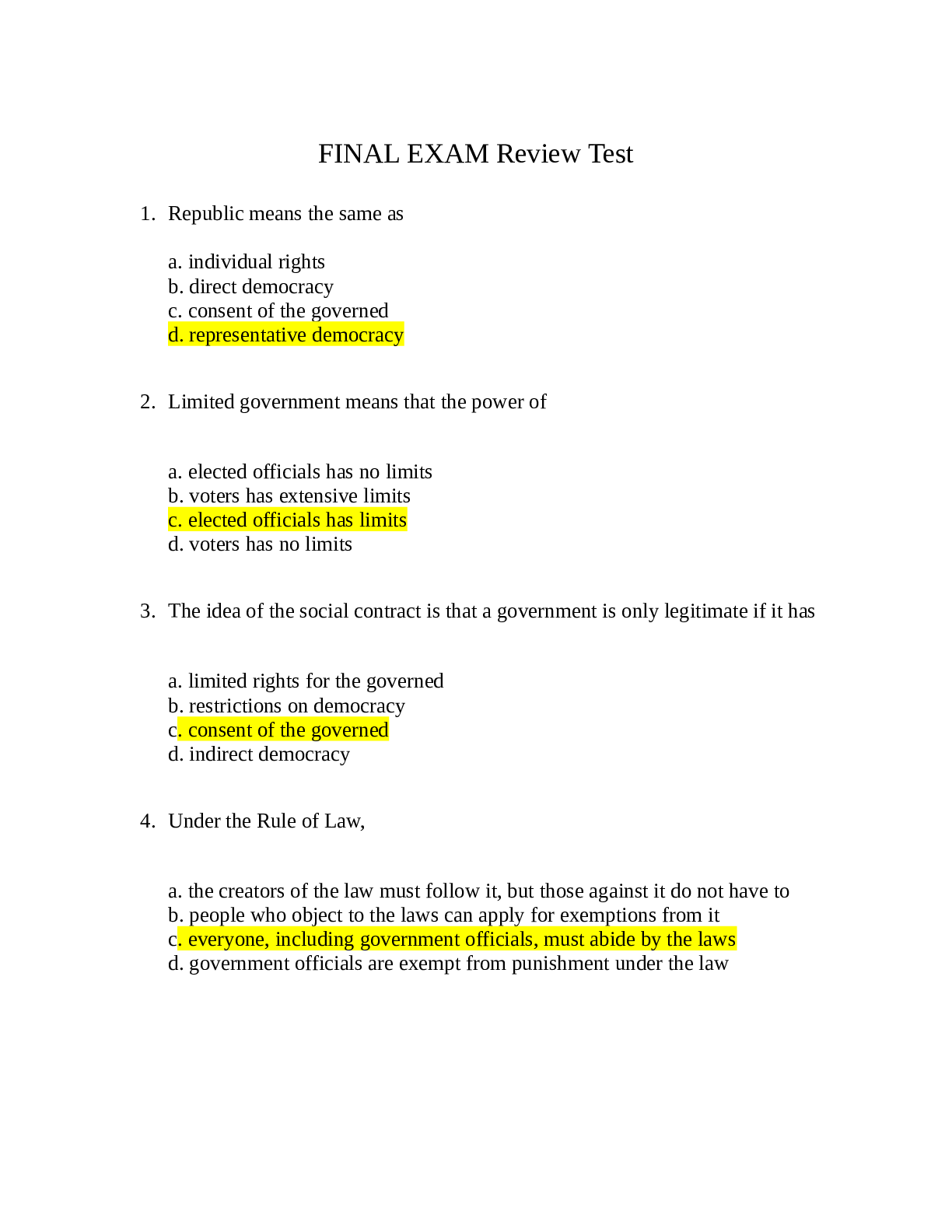
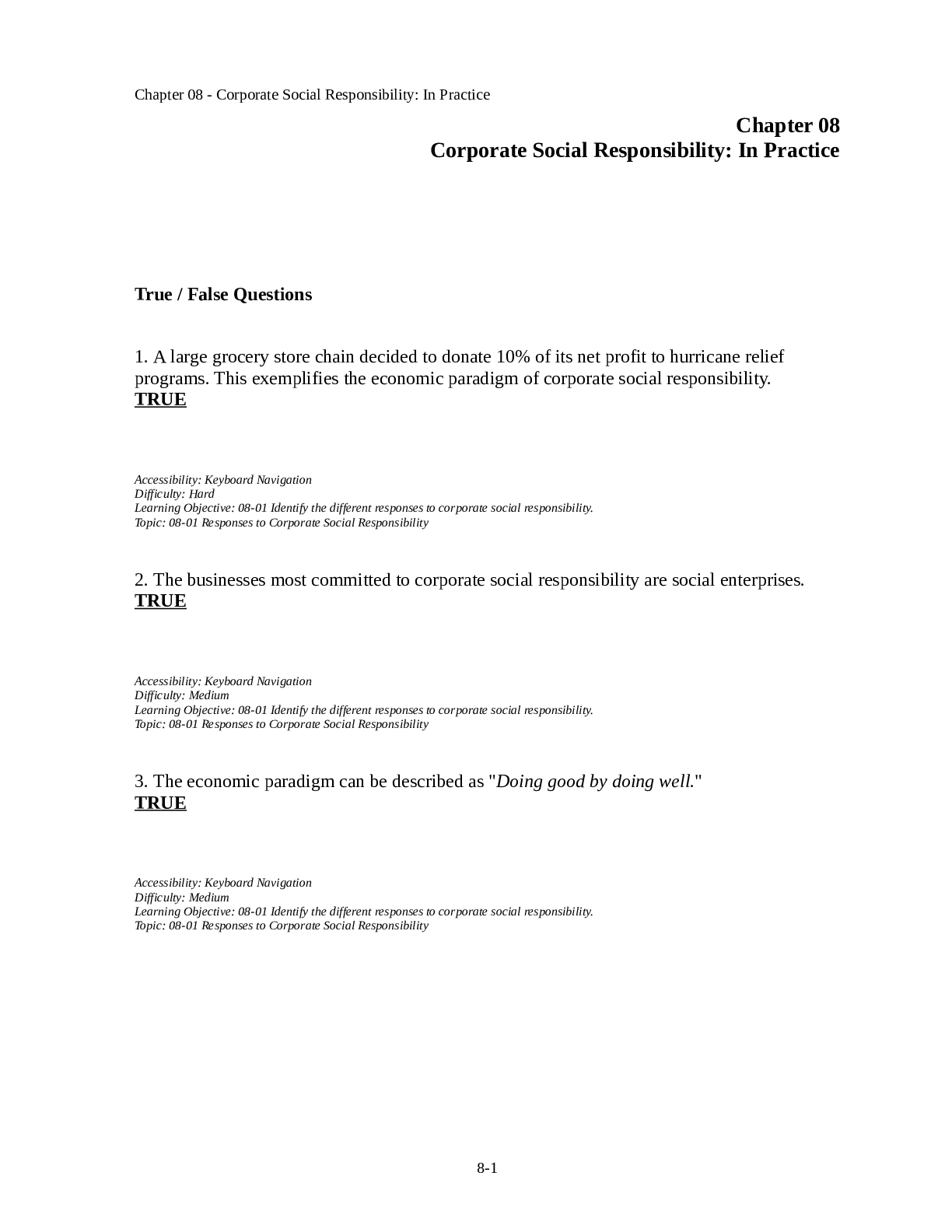

.png)


